“Geronimo” 1907
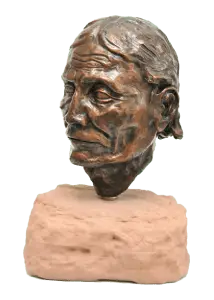
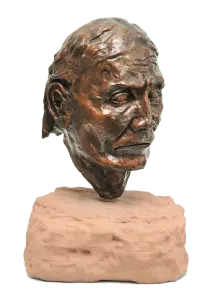
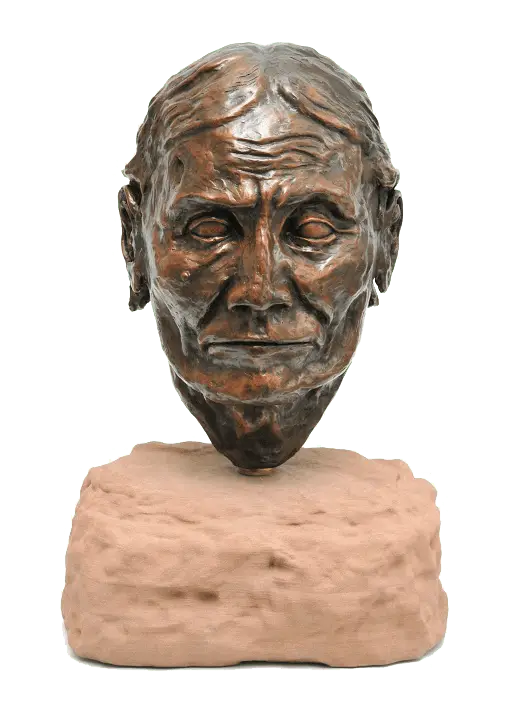
“Geronimo” 1907 |
||
 |
 |
 |
|
• 2014 • Bronze • Patina – Red/Brown • Height 13” Width 6.5” Depth 10” • 21 lbs. Series of 18Price Upon Request |
| This head was done using a photograph of Geronimo, taken by Adolph Muhr and dated 1913. The problem with that is Geronimo died on February 17, 1909, so, I used the 1907 date to identify the fact that Geronimo was near the end of his life at the time and showing the effects of a long, hard, battle-filled existence. His hair , though thinning, is still thick for a man in his late seventies, his cheekbones are pronounced and his cheeks hollow. He had a notable wart on his right cheek and an unexplained indentation on his right temple, possibly the remnant of a significant wound earlier in life. This is the visage of a fierce and proud old warrior. |
“Clear Shot” |
|
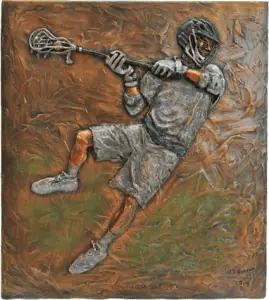 |
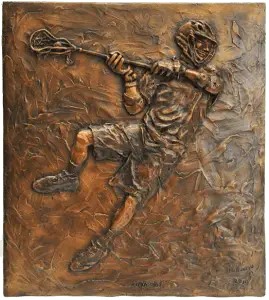 |
|
• 2015 • Bronze • Patina – Red/Brown or Color Wash • Height 16”, Width 14, Depth .5 to 1.0” • 14 lbs. Series of 24Price upon request |
|
|
During the summer of 2014 a friend suggested I do a lacrosse piece and helpfully provided a great action photograph. Since we were in a four month rental in New Canaan, CT and I was without my usual materials for a traditional, three dimensional sculpture, I improvised. Thus, a bas relief was born, utilizing a piece of wallboard found in the basement and the modeling clay I always have on hand. The process was intriguing as it merged the two dimensional restrictions of a painting with the raised sculpted relief. The action in the subject matter was exciting enough to encourage me to produce the full figure American Indian lacrosse piece, “Warrior Game” In the Bronzart Foundry in Sarasota, where I do most of my casting, we did one copy with a traditional monotone patina and tried another with a color wash. The two pieces are shown here for comparison. As with all other bronzes, the color and finish can be selected to personal taste. |
|
“Time Being” |
||
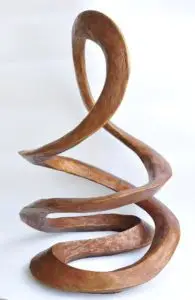 |
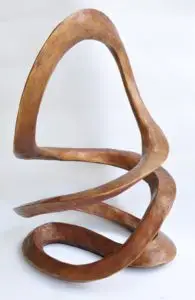 |
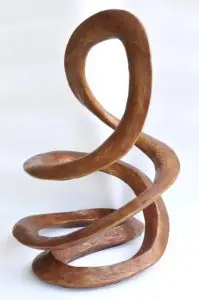 |
|
• 2017 • Bronze • Tint – red/brown • Height 31”, Length 19”, Width 21” • 88 lbs • Series of 18Price upon request
|
||
| A formed expression suggesting infinite existence. Originally done as a pair to complement the entrance of our friends home in Florida. | ||
“Osceola” |
||||||||||
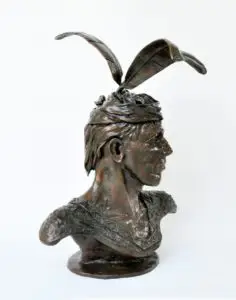 |
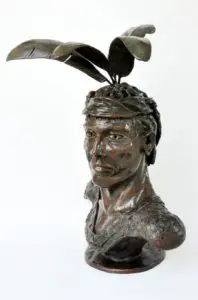 |
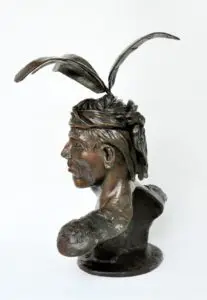 |
||||||||
|
• 2019 • Bronze • Tint – ferric/brown • Height 23”, Depth 9”, Width 17” • 44 lbs • Series of 24Price upon request |
||||||||||
|
The Seminole people are a polyglot of not only several tribes, but also several races. They had their origins primarily in the Creek nation, some of whom migrated into Florida from Georgia, and were also sometimes referred to as Lower Creeks. Osceola was born and named Billy Powell, in Georgia as the son of a Scottish trader and a mixed race Creek woman named Polly Coppinger. The Creeks were one of the Southeastern tribes that owned slaves and they intermarried, so Polly reflected that heritage. Since the records of his appearance contain only the images created by several painters, I have taken the liberty of depicting him in this bust as a robust young warrior whose features reflect his mixed heritage.
|
||||||||||
“Life Line” |
||
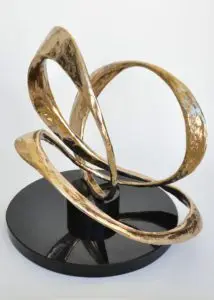 |
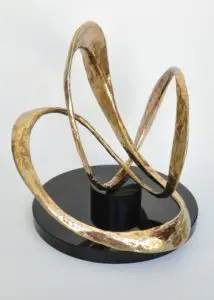 |
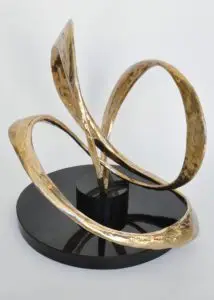 |
|
• 2017 • Bronze • Tint – polished bronze • Height 18”, Length 16”, Width 16” • 56 lbs • Series of 18Price upon request
|
||
| This piece preceded ” Time Being ” pursuing a similar theme as “Time Being”. The bronze is mounted on a tapered stack of black marble discs for elevation and contrast. | ||
Current Events |
||
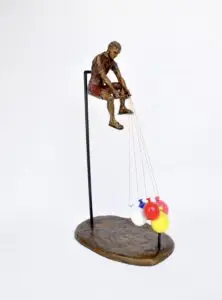 |
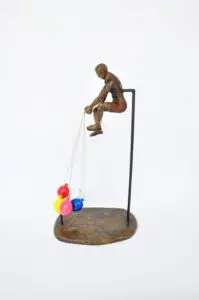 |
 |
|
• 2021 • Bronze • Patina – Brown • Height 23″ Width 9”, Depth 12”• 20 lbs.• Series of 24Price Upon Request |
||
| This piece considers the upside down state of present day affairs. | ||